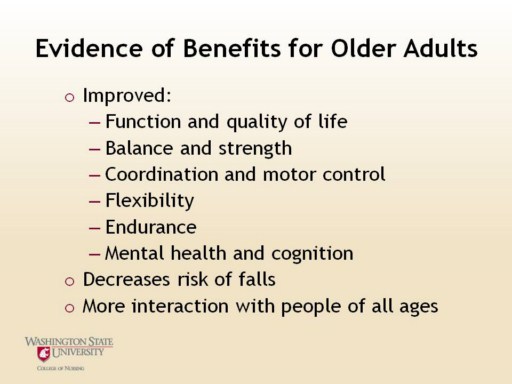| front |1 |2 |3 |4 |5 |6 |7 |8 |9 |10 |11 |12 |13 |14 |15 |16 |17 |18 |19 |20 |21 |22 |23 |24 |25 |26 |27 |review |
 |
Regular physical activity has been shown to improve the functional status and quality of life of older adults.
It is recommended that, if appropriate, older adults should engage in at least 30 minutes of moderate-intensity physical activity 5 days per week. Physical activity for older adults can take many forms (e.g. walking, swimming, stretching, dancing, gardening, hiking, cycling or organized exercise sessions). However, there are several important considerations specific to the older adult population with regard to physical activity recommendations:
Activities that maintain or increase flexibility are recommended.
Balance exercises are recommended for older adults at risk of falls.
Older adults that have medical conditions or disabilities that may affect their capacity to be physically active should seek advice from a doctor.
Consequently, physical activity can reduce the risk of falls - a major cause of disability among older people. Physical activity has also been shown to improve mental health and cognitive function in older adults and has been found to contribute to the management of disorders such as depression and anxiety. Active lifestyles often provide older persons with regular occasions to make new friendships, maintain social networks, and interact with other people of all ages.
Despite this, a global trend of declining physical activity participation that is associated with increasing age has been observed. |